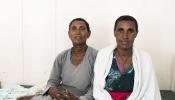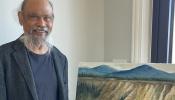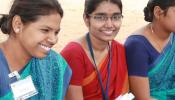A blog post by Penny Lyons, Executive Director, Seva Canada
We have seen nearly half of Nepal through the windows of our vehicle while weaving around water buffalo and goats being herded. Glimpses inside homes, firewood collected, children bathed by the roadside, laundry washed by a trickle of a stream. Everyone stops to stare, sometimes waving and smiling more often ignoring us and going about their lives.
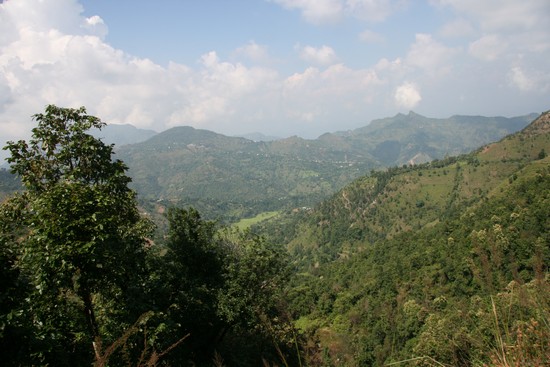
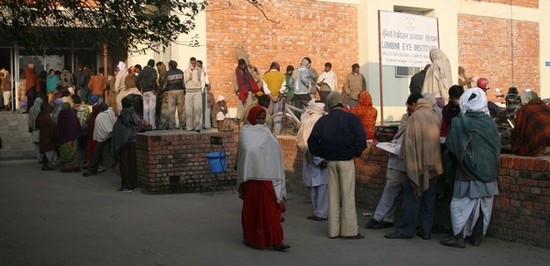
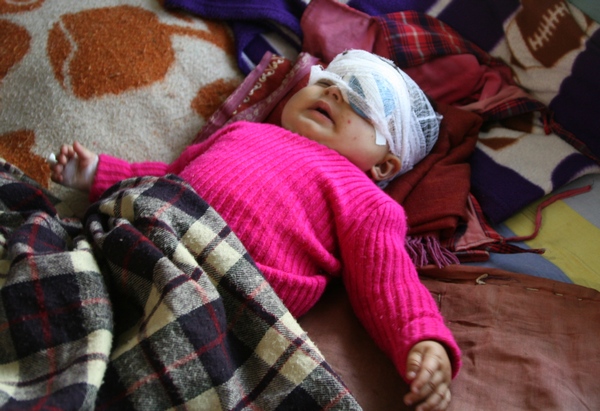

A view of the southern hills of Nepal. Photo courtesy of Annie Chen
The drive to Lumbini Eye Institute, Seva’s major institutional partner in Nepal, took 8 hours. We climbed green hills and wound through terraced rice paddies, we overtook oxen carts carrying everything from passengers to food to an ornate carved bed. We passed the time talking about the programs, what more we could do for partners, deserving projects that needed funding, how many more people needed to be trained and how astonishing that so much was being done with so little. We shared stories of past travels and talked about the people we met. Nepalis are famous for their love of laughter and their love of food – we have adapted and spend a lot of time laughing and eating. Dal Bhat (lentils and rice) are the staple food – morning and night – and we have learned to eat with our hands (right one of course).
Lumbini Eye Institute Photo courtesy of Linda Young
Lumbini Eye Institute is on the flat, dusty plain bordering India. It is a large, sophisticated hospital housing every eye specialty, including a corneal eye bank. The majority of patients that come to Lumbini are Indian and their vast numbers fund the programs that reach into the rural and remote parts of Nepal. We tour the hospital and spend time with the doctors and staff. The complex political situation in Nepal affects even this hospital with multiple political factions vying for attention amongst the staff. It doesn’t disturb the work though – hundreds of patients every day are treated at the hospital by surgeons who are so skilled they would be an asset in any hospital, anywhere. There are a number foreign faces visible at the hospital and what may be surprising is that they are there to learn, not to teach. We spent an evening having dinner at the home of Dr. Salma. She was in Vancouver on a pediatric fellowship last year and is now practicing at Lumbini. Salma was beloved by all who met her and we were happy to spend some time with her. One of the practices she witnessed in Vancouver that she wanted to transplant to Lumbini was to stock the pediatric ward with crayons and colouring books and small toys for the children. She realized within the first week however that when hundreds of children every week come through her ward, she couldn’t possibly buy enough crayons or colouring books for all. Sometimes, she says, the numbers and need are overwhelming. From Lumbini we drove north into the hilly district of Palpa. We were destined for the town of Tansen but on the way there took a “short” detour to visit an eye camp in Jalpa -- a region in the eastern part of Palpa. The road is rutted and narrow. On our left is a rock wall; on our right is a drop of hundreds of feet. I look at the trees clinging to the hillside below me and try and calculate whether they would be strong enough to stop this truck from rolling all the way to the bottom of the valley. I think not. I close my eyes for a while but the view is spectacular. Huge green hills, deep valleys, beautiful rivers and tiny hamlets with some of the most spectacularly beautiful children I have ever seen. We stop, literally, at the end of the road. To go any further into the district we would have to go on foot. Happily, we have also arrived at the eye camp which is housed in a school perched on the side of the hill. We have arrived late so most of the patients have come and gone and 10 cataract surgeries conducted. The last patient, an elderly man, is waiting his turn. Most of these people would rarely venture down the path to the next village never mind walking for a day or more to reach the hospital in Tansen.
A child after pediatric cataract surgery at the Lumbini Eye Institute in Nepal. Photo by Linda Young
Bringing eye care to the village is often the only solution. We are offered the usual glass of Coke (cheaper than water and available everywhere which might explain the huge rise in diabetes in Nepal), visit with the staff, photograph the children and climb back in the truck for the drive to Tansen where we will meet with the hospital staff and spend the night. The drive back was less horrifying somehow. Tansen is an ancient city with much of its original Newari architecture intact. The streets are steep and winding and lined with shops filled with traditional brass objects and textiles. A five-minute walk from our hotel takes us to the top of hill where we can see the Himalayas displayed before us. On this morning, Annapurna was just peeking out above the clouds. A significant portion of Seva’s support to Nepal is directed to the hospital in Tansen. Sitting at the top of a hill with a forest behind it, the setting is magnificent. It usually has one permanent ophthalmologist, but the previous one has left and they are waiting for another who will come in a few months. In the meantime, an ophthalmologist from Lumbini comes and performs surgeries once a week. Last year this small facility saw and treated thousands of patients. Adjacent to the hospital is the Sherman School for Primary Eye Care which is a training centre for community ophthalmology in the region. Funded by the Lewis and Ruth Sherman Foundation, it is the only training centre of its kind in Nepal and has grown into a comprehensive training centre for eye care services for the hill districts of Nepal. As is the case in every place we visit we are laden with gifts of appreciation – Newari shawls, caps, ties and an extremely heavy brass water jug. There is always a PowerPoint presentation showing patient data and long, lovely speeches of gratitude. We then respond with somewhat shorter and generally less eloquent speeches about our gratitude to them. Everyone laughs, and we eat, again.